 W
WRotational symmetry, also known as radial symmetry in biology, is the property a shape has when it looks the same after some rotation by a partial turn. An object's degree of rotational symmetry is the number of distinct orientations in which it looks exactly the same for each rotation.
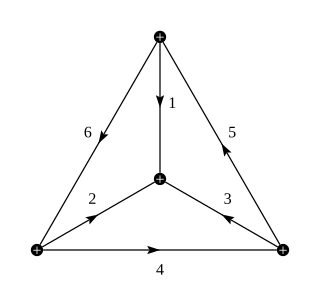 W
WWigner's 6-j symbols were introduced by Eugene Paul Wigner in 1940 and published in 1965. They are defined as a sum over products of four Wigner 3-j symbols,
 W
WIn physics, Wigner's 9-j symbols were introduced by Eugene Paul Wigner in 1937. They are related to recoupling coefficients in quantum mechanics involving four angular momenta
 W
WThe Armenian eternity sign or Arevakhach is an ancient Armenian national symbol and a symbol of the national identity of the Armenian people. It is one of the most common symbols in Armenian architecture, carved on khachkars and on walls of churches.
 W
WAxial symmetry is symmetry around an axis; an object is axially symmetric if its appearance is unchanged if rotated around an axis. For example, a baseball bat without trademark or other design, or a plain white tea saucer, looks the same if it is rotated by any angle about the line passing lengthwise through its center, so it is axially symmetric.
 W
WThe azimuthal quantum number is a quantum number for an atomic orbital that determines its orbital angular momentum and describes the shape of the orbital. The azimuthal quantum number is the second of a set of quantum numbers which describe the unique quantum state of an electron. It is also known as the orbital angular momentum quantum number, orbital quantum number or second quantum number, and is symbolized as ℓ.
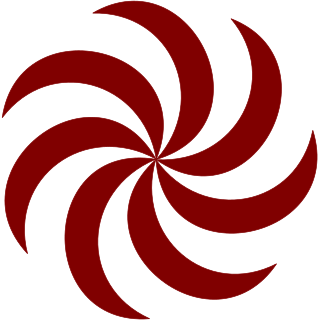 W
WBorjgali is a Georgian symbol of the Sun with seven rotating wings.
 W
WA circle of a sphere is a circle that lies on a sphere. Such a circle can be formed as the intersection of a sphere and a plane, or of two spheres. A circle on a sphere whose plane passes through the center of the sphere is called a great circle; otherwise it is a small circle. Circles of a sphere have radius less than or equal to the sphere radius, with equality when the circle is a great circle.
 W
WIn quantum mechanics, a doublet is a mixed quantum state of a system with a spin of 1/2, such that there are two allowed values of the spin component, −1/2 and +1/2. Quantum systems with two possible states are sometimes called two-level systems. Essentially all occurrences of doublets in nature arise from rotational symmetry; spin 1/2 is associated with the fundamental representation of the Lie group SU(2), the group that defines rotational symmetry in three-dimensional space.
 W
WThe Gankyil or "wheel of joy" is a symbol and ritual tool used in Tibetan and East Asian Buddhism. It is composed of three swirling and interconnected blades.
 W
WA hexagram (Greek) or sexagram (Latin) is a six-pointed geometric star figure with the Schläfli symbol {6/2}, 2{3}, or {{3}}. Since there are no true regular continuous hexagrams, the term is instead used to refer to a compound figure of two equilateral triangles. The intersection is a regular hexagon.
 W
WA regular icosahedron has 60 rotational symmetries, and a symmetry order of 120 including transformations that combine a reflection and a rotation. A regular dodecahedron has the same set of symmetries, since it is the dual of the icosahedron.
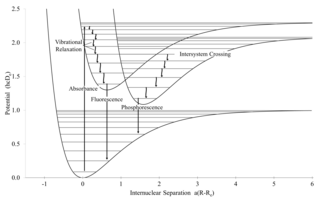 W
WIntersystem crossing (ISC) is a radiationless process involving a transition between the two electronic states with different states spin multiplicity.
 W
WMagnetic braking is a theory explaining the loss of stellar angular momentum due to material getting captured by the stellar magnetic field and thrown out at great distance from the surface of the star. It plays an important role in the evolution of binary star systems.
 W
WA regular octahedron has 24 rotational symmetries, and 48 symmetries altogether. These include transformations that combine a reflection and a rotation. A cube has the same set of symmetries, since it is the polyhedron that is dual to an octahedron.
 W
WIn mathematical physics and mathematics, the Pauli matrices are a set of three 2 × 2 complex matrices which are Hermitian and unitary. Usually indicated by the Greek letter sigma, they are occasionally denoted by tau when used in connection with isospin symmetries. They are
 W
WRacah's W-coefficients were introduced by Giulio Racah in 1942. These coefficients have a purely mathematical definition. In physics they are used in calculations involving the quantum mechanical description of angular momentum, for example in atomic theory.
 W
WIn nonrelativistic quantum mechanics, an account can be given of the existence of mass and spin in terms of the representation theory of the Galilean group, which is the spacetime symmetry group of nonrelativistic quantum mechanics.
 W
WIn physics, a rigid body is a solid body in which deformation is zero or so small it can be neglected. The distance between any two given points on a rigid body remains constant in time regardless of external forces or moments exerted on it. A rigid body is usually considered as a continuous distribution of mass.
 W
WIn the physical science of dynamics, rigid-body dynamics studies the movement of systems of interconnected bodies under the action of external forces. The assumption that the bodies are rigid simplifies analysis, by reducing the parameters that describe the configuration of the system to the translation and rotation of reference frames attached to each body. This excludes bodies that display fluid, highly elastic, and plastic behavior.
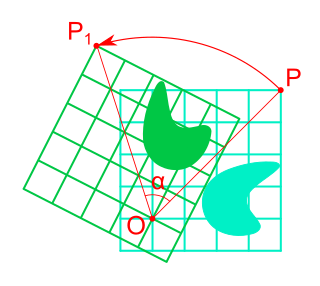 W
WRotation in mathematics is a concept originating in geometry. Any rotation is a motion of a certain space that preserves at least one point. It can describe, for example, the motion of a rigid body around a fixed point. A rotation is different from other types of motions: translations, which have no fixed points, and (hyperplane) reflections, each of them having an entire (n − 1)-dimensional flat of fixed points in a n-dimensional space. A clockwise rotation is a negative magnitude so a counterclockwise turn has a positive magnitude.
 W
WThe six-petal rosette is a design with six-fold dihedral symmetry composed from six Vesica piscis lenses arranged radially around a central point, often shown enclosed in a circumference of another six lenses.
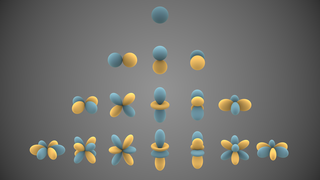 W
WIn mathematics and physical science, spherical harmonics are special functions defined on the surface of a sphere. They are often employed in solving partial differential equations in many scientific fields.
 W
WIn quantum mechanics and particle physics, spin is an intrinsic form of angular momentum carried by elementary particles, composite particles (hadrons), and atomic nuclei.
 W
WThe swastika symbol, 卐 or 卍, is an ancient religious icon in the cultures of Eurasia. The left-facing version may also be referred to as sauwastika. It is used as a symbol of divinity and spirituality in Indian religions, including Hinduism, Buddhism and Jainism. In the Western world, it was a symbol of auspiciousness and good luck until the 1930s when the right-facing tilted form became a feature of Nazi symbolism as an emblem of the Aryan race. As a result of World War II and the Holocaust, many people in the West still strongly associate it with Nazism and antisemitism. The swastika continues to be used as a symbol of good luck and prosperity in Hindu, Buddhist and Jain countries such as Nepal, India, Mongolia, China and Japan. It is also commonly used in Hindu marriage ceremonies.
 W
WA taijitu is a symbol or diagram in Chinese philosophy representing Taiji in both its monist (wuji) and its dualist aspects. Such a diagram was first introduced by Song Dynasty philosopher Zhou Dunyi in his Taijitu shuo 太極圖說.
 W
WA regular tetrahedron has 12 rotational symmetries, and a symmetry order of 24 including transformations that combine a reflection and a rotation.
 W
WThe three hares is a circular motif or meme appearing in sacred sites from the Middle and Far East to the churches of Devon, England, and historical synagogues in Europe. It is used as an architectural ornament, a religious symbol, and in other modern works of art or a logo for adornment, jewelry, and a coat of arms on an escutcheon. It is viewed as a puzzle, a topology problem or a visual challenge, and has been rendered as sculpture, drawing, and painting.
 W
WIn quantum mechanics, a triplet is a quantum state of a system with a spin of quantum number s =1, such that there are three allowed values of the spin component, ms = −1, 0, and +1.
 W
WA triptych is a work of art that is divided into three sections, or three carved panels that are hinged together and can be folded shut or displayed open. It is therefore a type of polyptych, the term for all multi-panel works. The middle panel is typically the largest and it is flanked by two smaller related works, although there are triptychs of equal-sized panels. The form can also be used for pendant jewelry.
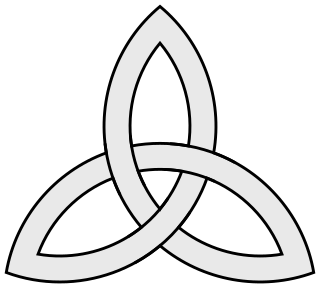 W
WThe triquetra is a triangular figure composed of three interlaced arcs, or (equivalently) three overlapping vesicae piscis lens shapes.
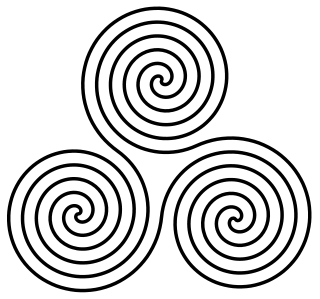 W
WA triskelion or triskeles is a motif consisting of a triple spiral exhibiting rotational symmetry. The spiral design can be based on interlocking Archimedean spirals, or represent three bent human legs.